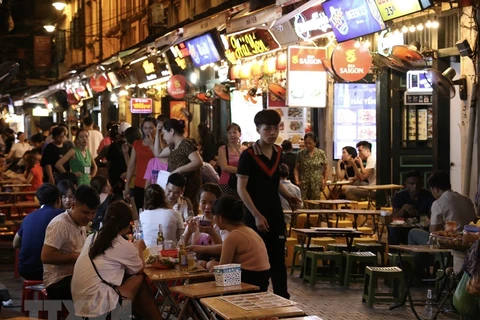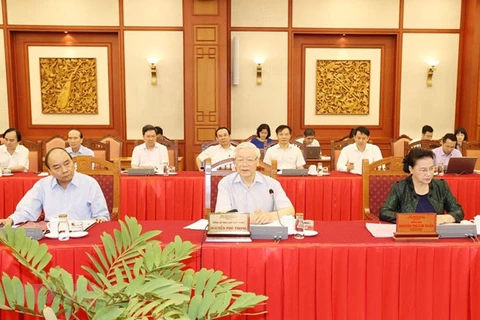Hanoi (VNA) – Hanoi’s agriculture is projected to grow at least 3 percent in 2021 under a recently-issued plan on agriculture and rural development in the year.
The city also aims to have all communes and three more districts recognised as new-style rural areas, and 20 communes recognised as advanced new-style rural areas.
The average income of local farmers is set to increase to 58 million VND (2,500 USD), and the rate of labourers in rural areas with stable jobs is projected at over 95 percent, according to the plan.
To that end, the municipal Department of Agriculture and Rural Development will advise the city administration to devise policies, solutions and build concentrated and large-scale farming models, creating a premise to attract investors in agricultural production and processing.
The department will promote scientific and technological application, and restructuring in the sector, towards a modern and comprehensive agricultural sector.
The local agricultural sector will work to promote production linkages, effectively optimise brand names and trademarks, and expand high-tech and organic agriculture in order to churn out safe products with clear origin.
Hanoi’s agriculture sector is facing a host of difficulties from the COVID-19 pandemic, which requires it to continue with restructuring and switch to new crops to ensure growth.
Director of the municipal Department of Agriculture and Rural Development Chu Phu said the agriculture sector in the capital targets 89,500 ha of rice, 1.8 million pigs, and 38 million poultry heads this year, and is expected to grow 6.26 percent.
Secretary of the Hanoi Party Committee Vuong Dinh Hue asked that pig breeding be stepped up to 1.8 million heads to curb the rising CPI and that more fruits and vegetables be grown.
He suggested effectively using industrial and non-cultivation land to meet food demand, issuing mechanisms and policies to use existing agriculture land effectively, and attracting unemployed people from rural to urban areas.
Hue asked the Steering Committee on Programme No. 02-CTr/TU from the municipal Party Committee on the development of agriculture, new-style rural areas, and improving farmers’ lives during the 2016-2020 period to increase resources for public investment, contributing to economic growth and improving workers’ incomes.
The city’s Farmers’ Union has been assigned to guide farmers on production, connect them with scientists, businesses, and banks, and form new-style cooperatives.
The Hanoi Department of Agriculture and Rural Development has issued a list of 11 projects that it is inviting investment for between now and 2025.
They include hi-tech agriculture projects in An Thuong and Song Phuong communes of Hoai Duc district, and Hien Ninh, Thanh Xuan and Tan Dan communes of Soc Son district.
Several concentrated livestock slaughtering projects are also open to investment such as those in Quang Lang and Tri Thuy communes of Phu Xuyen district, Dong Thai commune of Ba Vi district, Trach My Loc commune of Phuc Tho district, and Minh Phu commune of Soc Son district.
The city is striving to have 10 districts recognised as new-style rural areas in 2020, according to a local official.
Hanoi has six new-style rural districts, namely Dan Phuong, Dong Anh, Thanh Tri, Hoai Duc, Quoc Oai and Gia Lam.
To achieve the target, Permanent Vice Secretary of the municipal Party Committee Ngo Thi Thanh Hang requested the municipal Department of Agriculture and Rural Development to speed up the disbursement of a 700-billion-VND (over 30 million USD) aid package for districts and communes to develop agriculture, build new-style rural areas, and improve local living standards.
According to Director of the department Chu Phu My, the city’s agricultural growth declined by 1.17 percent year-on-year in the first quarter of 2020 due to the impact of African swine fever and the COVID-19 pandemic.
The national target programme on building new-styled rural areas was initiated by the Government in 2010 with the aim of developing rural regions. The list of criteria includes the development of infrastructure, the improvement of production capacity, environmental protection, and the promotion of cultural values./.
VNA























